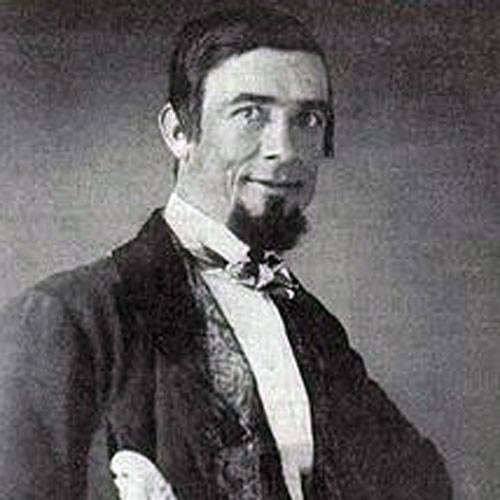The Ringling Brothers Circus was founded in 1884; and later, the merging of the Ringling Brothers and the Barnum & Bailey Circus was in 1919.
Long before these well known names became part of America’s circus legend the Borough of Girard was where Circus pioneer Dan Rice and his troupe made their winter home.
Dan Rice was probably the most famous circus and clown, popularizing such expressions as The One-Horse Show and Hey, Rube! Rice created the touring American circus and was the premier showman of his time. In 1853 he moved to the borough of Girard and established the town as his winter quarters for his new circus troupe.
His circus was called the greatest show on earth years before Ringling Brothers were to pitch their first tent. Rice is even considered one of the models for Uncle Sam, he often dressed up as the character that has been the personification of America for two centuries. But Rice was not only a pioneer showman. He was also a professional clown — one of the nation’s first — an actor, a director and producer, a songwriter, and even a presidential candidate.
Born Daniel McLaren in New York City, Rice gained 19th century fame with many talents, most of which involved him gallivanting around as a clown figure in circuses. In addition to his clowning talents, he was an animal trainer, song writer, commentator, political humorist, strong man, actor, director, producer, dancer, and politician. He ran for Senate, Congress, and President of the United States — dropping out of each race.
Rice changed the circus into what it is today by mixing animals, acrobats and clowns. His first break came in 1841 when he got a job of presenting a pig named Sybil who could do many tricks, including the ability to tell time. From there he moved on to singing and dancing, and got caught up briefly in the popularity of the Negro Song, singing in black-face. Gaining fame and popularity, he changed styles once again; he starred in various parodies of works by William Shakespeare, including that of "Dan Rice's Version of Othello" and "Dan Rice's Multifarious Account of Shakespeare's Hamlet." He would perform these with various songs and dialects. "Rice was not simply funnier than other clowns; he was different, mingling jokes, solemn thoughts, civic observations, and songs."
Expanding his horizons, he went into producing his own shows, and often had more than one tour going on at the same time. He wanted to move on from his frivolous clowning, and reinvented himself into a gentleman. He started to take up politics and would often have Democratic undertones in his shows. He was then regarded as not only a multi-talented performer, but a smart and noble man who was to be admired. He won the affection of many newspapers and publicists, including those of a then unknown Mark Twain and Walt Whitman. Mark Twain paid him homage in his description of a circus in Adventures of Huckleberry Finn, and it is likely a boyhood Twain actually saw Rice perform when his circus came to Hannibal for a show.
His shows became more famous than any of the other shows touring at the time, including that of rival, Phineas Taylor Barnum. During the 19th century, his name was synonymous with theater. He reinvented the theater into a vaudevillian style before there was vaudeville. He was very patriotic, later influencing the likes of George M. Cohan.
It’s believed that Agrippa Martin, who had grown up in Girard and had become the foremost animal trainer of his day, persuaded Rice to settle in Girard. Soon after arriving, Rice built a huge house near the public square and established winter quarters in the town for his famed circus. Girard quickly became the headquarters of most of the other major American circuses, including Thayer & Noyes; Rice & Forepaugh; G.R. Spaulding & Co.; Anderson & Co.; Warner, Springer and Henderson; and others, and Erie County became the center of the 19th-century U.S. circus world. Barns housing elephants and other circus animal were built – Martin himself became famous as the man who trained the legendary circus elephant Hannibal.
Martin and many 19th century circus figures are buried in Girard, but Rice’s mansion and most of the other 19th century circus buildings have been razed.
Dan Rice’s legacy though became a permanent part of Girard on November 1, 1865, when some 6,000 to 7,000 people gathered, among them many veteran officers of the army, to witness the dedication of Girard’s Civil War monument. The ceremony was an elaborate event featuring an elephant drawn circus car carrying 36 young women (one per state in the Union) and a presentation to Pennsylvania governor Andrew G. Curtin. Conceived and funded by Dan Rice, the illustrious showman, the monument stands 27 feet, is made of marble and granite, and was built by Leonard W. Volk of Chicago at a cost of $5,000. It was erected “In memory of the officers and soldiers of Erie County, who have died in defense of their country.”
Except for a U.S. Civil War statue, one barn, and Dan Rice Days, the annual Girard summer festival, there are few physical remaining reminders of Girard’s circus glory days and its most famous resident.
 |
| Dan Rice. |
